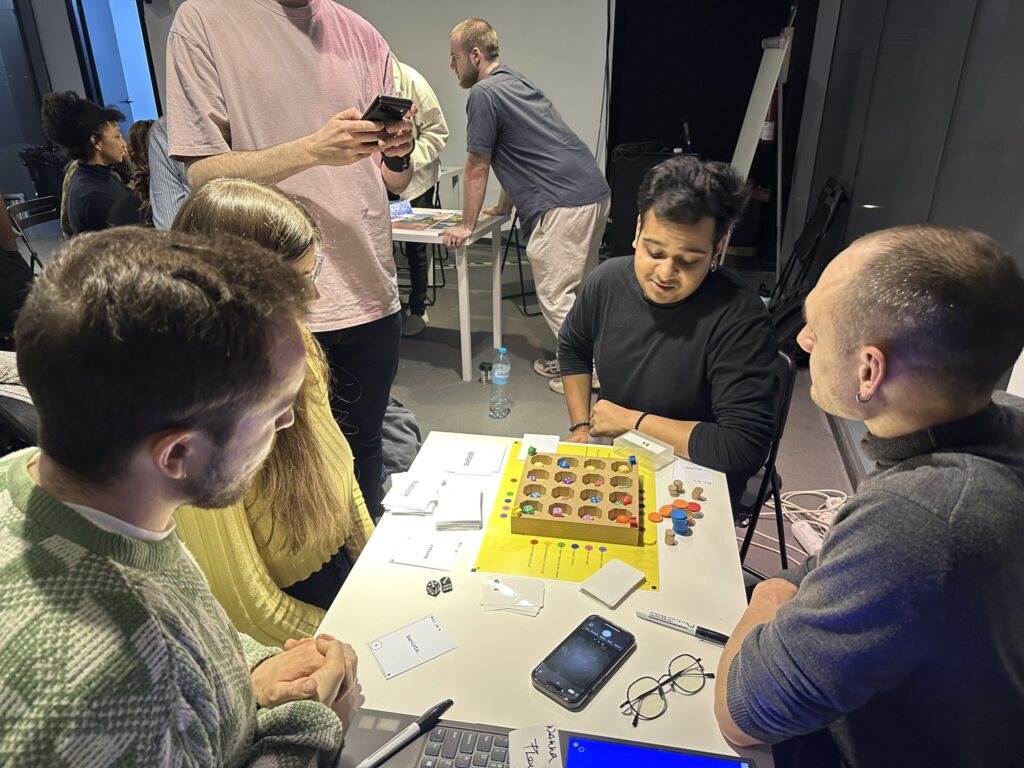In the field of urban planning, engaging citizens and stakeholders in the increasingly complex social and environmental issues of the built environment is one of the major challenges. As a way of looking to attract, persuade, and foster empathy, Quaker can be a potent tool in connecting the community of Poblenou with our project and vice versa.

WHAT’S QUAKER?
“A game of 4 x 4 blocks containing random number of dices and colors and changes with uncertainty leading to unbalance in winning the game engaging people”
‘Quaker’ is a game situated in nowadays context of gentrification in the catalan neighborhood of Poblenou, in Barcelona. With the constant evolution of the neighborhood, it’s important to stop for a moment and analyze if these changes represent a progress for the residents or a threat to the well being of the community.

THE CONTEXT BEHIND THE GAME’S RELEASE
The most impactful problem the Poblenou neighborhood is facing is the gentrification, defined as the process by which a historically lower-income neighborhood undergoes transformation due to an influx of more affluent residents, businesses, and investments; this often leads to increased property values, higher rents, and changes in the character of the area.
Poblenou’s main history goes back to the last century, when the catalan Manchester was an industrial district with railroads. However, in 1992 due to the Olympic Games happening in Barcelona, the neighborhood started its metamorphosis, slowly but at the same time fastly becoming the gentrified neighborhood we know today, known as a business district and boom in the housing price.
GAME DESIGN PROCESS
The design process involved drawings and testing the series of iterations of the game that we develop during the week, which included square grids, dice, writing cards, odd and even decision making, building, destroying or conquering the neighborhood. First we started to constructing blocks of 3x3x3 with different colors for different functions, trying to make neighborhoods as per player’s intuition and destroy it using gameplay instructions , thus trying to achieve the goal of creating awareness to people.

The final output of Quaker took inspiration of Catan, some capitalist elements of Monoploy and the abstraction of Poblenou’s urban grid for the board.
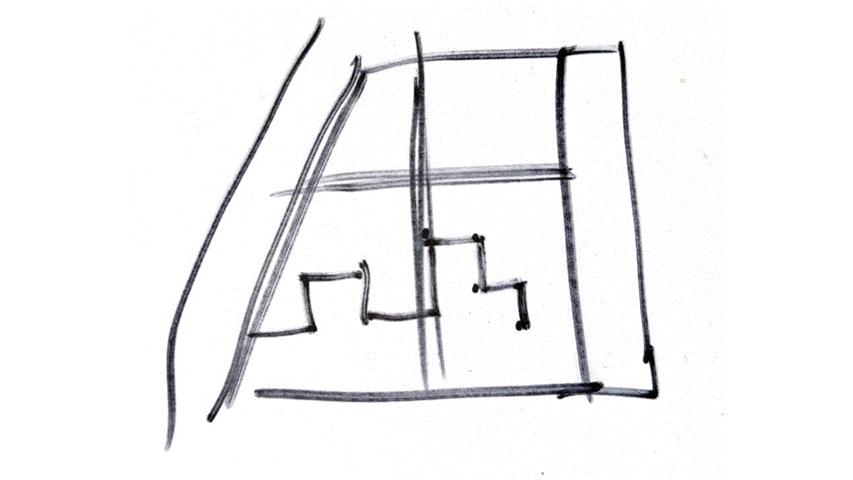
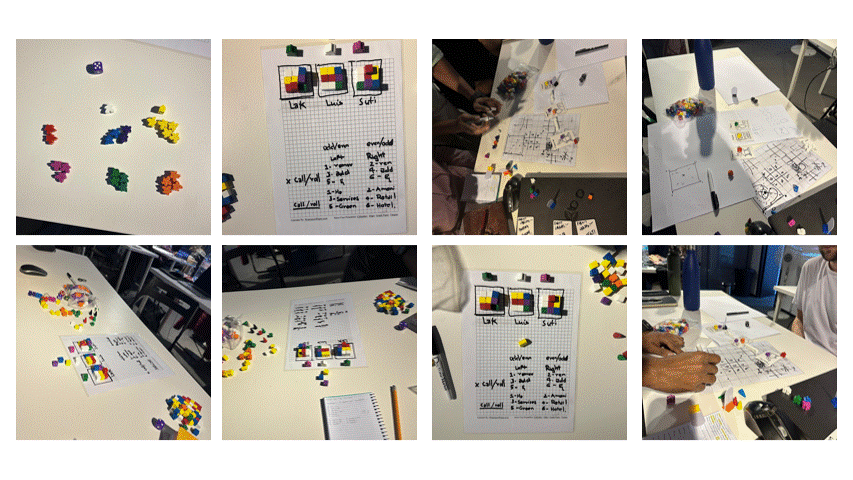
THE ELEMENTS OF QUAKER

The Board
Quaker is a fun and fast-paced board game played on a 4×4 grid. Players take turns placing tiles to control the board, with each move creating new challenges. The goal is to outsmart your opponent by placing tiles strategically and blocking their moves. Every turn can change the game, making each match exciting and unpredictable. Easy to learn but full of surprises, Quaker is perfect for quick and competitive play!
The Dice
A dynamic dice-based game featuring 16 dice in six different colors. Each color represents a unique function, while the number on each die determines its expense. Players must think strategically, balancing their choices between powerful moves and resource management. Every roll and placement can change the course of the game, making each match a test of strategy and adaptability.
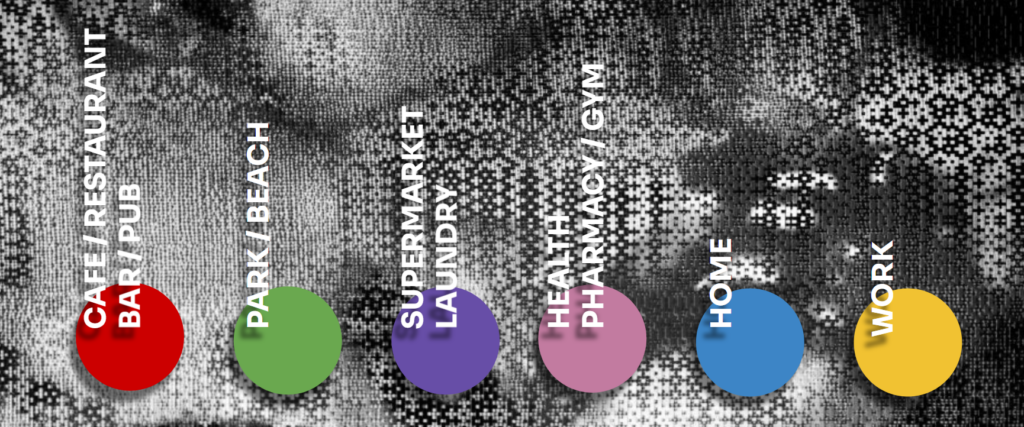

Action Cards
Incorporating a strategic layer through the use of Action Cards, drawn from a designated deck. Each card is linked to a specific function and must be executed when its criteria are met. These actions introduce mechanics such as modifying dice values, repositioning pieces, restricting movement, or activating unique effects, thereby influencing the game’s tactical depth. Players must engage in critical decision-making, effectively utilizing their Action Cards to optimize their strategy while anticipating and counteracting their opponent’s moves.

Work Cards
Work Card deck, introducing an economic dimension to gameplay. Players draw Work Cards to engage in specific tasks, which allow them to earn capital based on predefined conditions. The capital accumulated can be strategically allocated to perform actions, manipulate dice functions, or acquire advantages. This system creates a balance between resource generation and expenditure, requiring players to plan their economic decisions while adapting to the evolving game state.
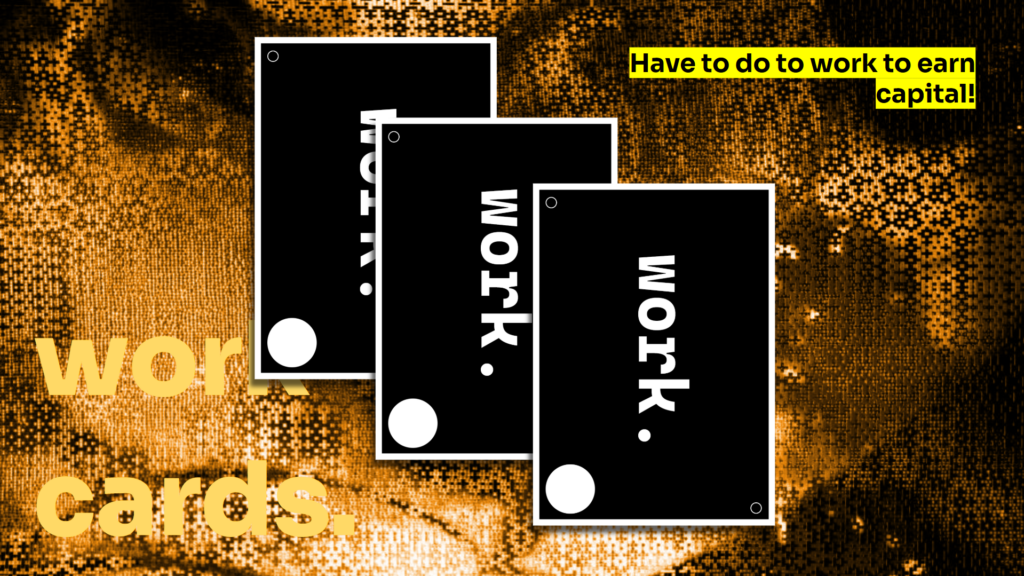
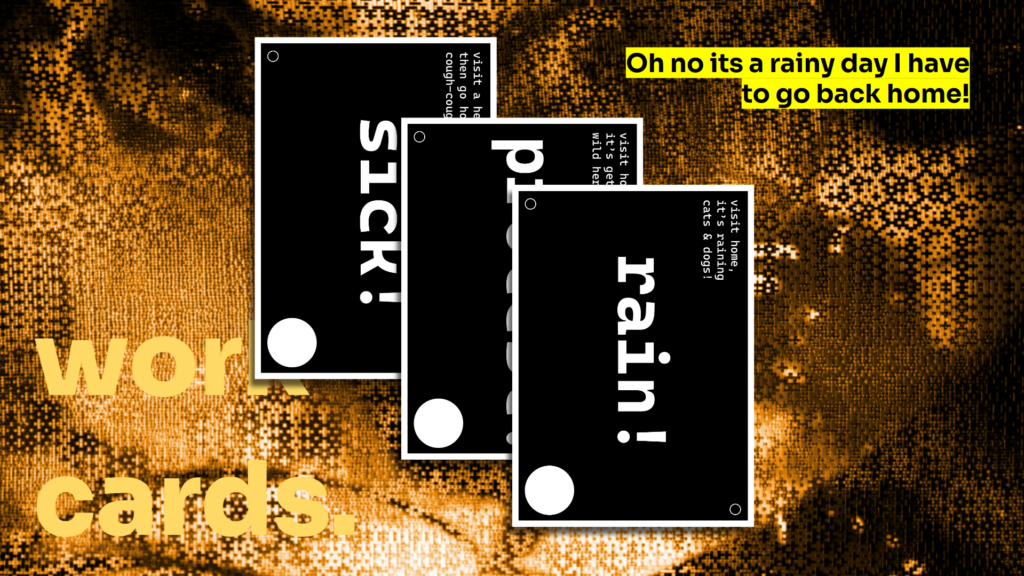
Persona Cards
Persona Cards, which define each player’s role and initial resources. Each Persona is linked to a starting capital, influencing the player’s strategic approach. Some personas may begin with high capital but limited functions, while others might have more abilities but fewer resources. This asymmetric design ensures diverse playstyles, requiring players to adapt their strategies based on their persona’s strengths and limitations. The Persona Cards add depth to the game, making each match a unique experience.
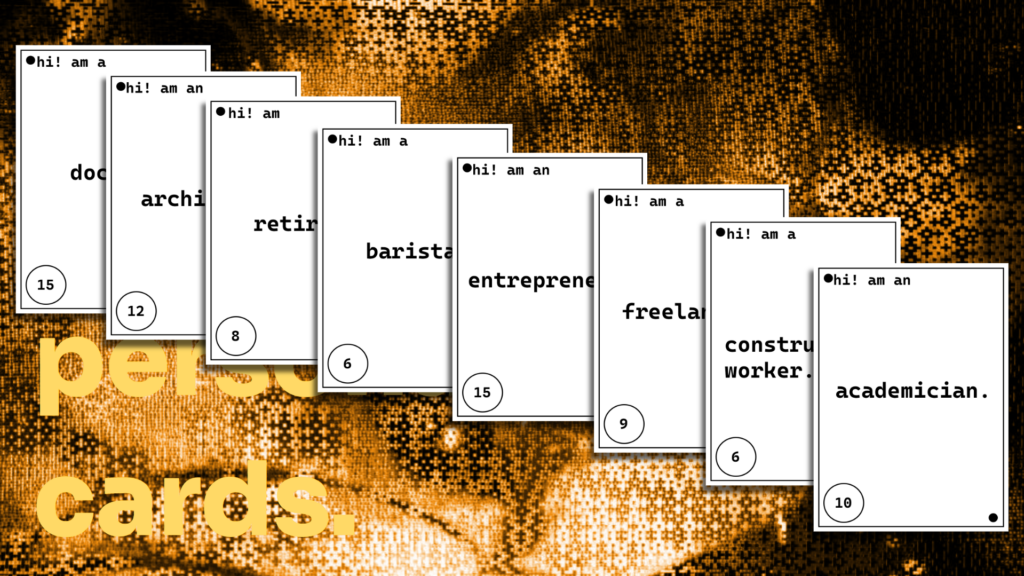
Capital
In Quaker, Capital and Expense are central to the game’s economic strategy. Capital represents the resources a player has at their disposal, which can be earned through Work Cards and is used to perform various actions, such as modifying dice or activating specific functions. Expense, on the other hand, is the cost associated with executing actions, determined by the number on a die. Higher numbers signify greater expense, meaning more capital is required for powerful moves. Players must carefully manage their capital to balance earning and spending, making strategic decisions to gain an advantage while keeping their resources in check.
HOW TO PLAY?
Goal of the Game
Complete your route around the neighborhood in the fewest steps possible. The player with the least steps after three rounds wins.
Steps:
- Each player chooses a corner to start. Set the board with all 16 dice arranged in 4×4 formation and the arrangement should be random and not biased.
- Place your character on corresponding die (any corner of the board). This will be your starting point.
- Draw a persona card from the persona card deck. Each player gets one card and, introduces each other as the persona they according to the card.
- Shuffle the action card deck & work card deck and pick 1 card from either deck in each round to make your turn. Note: you cannot choose a work card in the first round.
- The player moves on the dice to reach the function to the corresponding action. Count & register the number of steps in the process.
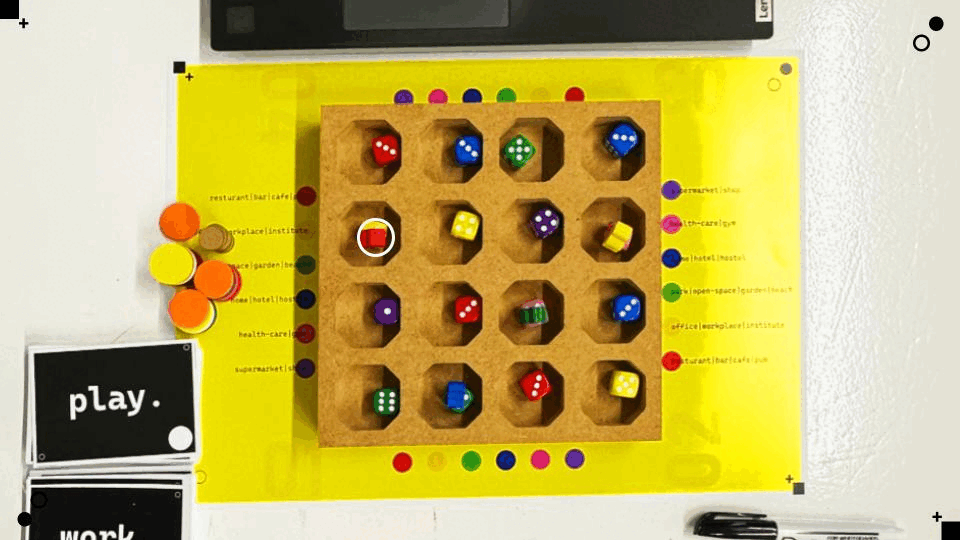
Players can justify and debate their corresponding action for the task depending on their persona:
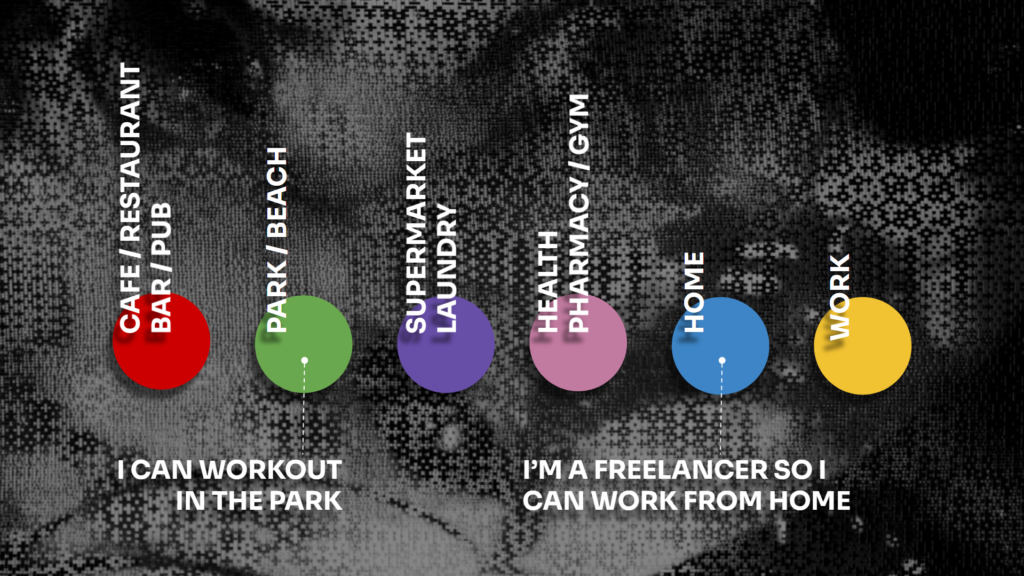
After three round shake the board vigorously [QUAKE!] to rearrange the dice on the board and repeat it 3 times.
EXTRA: The player who has 10 capital can deposit it in the bank and ask any player to move on the board corresponding to the action card they draw to increase their number of movements.
The player who has the least amount of movements wins!
If you ran out of money, you’re out of the game.
OUTPUTS FROM THE GAME
Quaker offers the option of including the Poblenou community in the participatory process of designing the neighborhood in an interactive and fun way, making decisions about their movement patterns and sharing the places where they usually carry out certain activities according to their profile; so that we can later use this data and the community’s reflections on gentrification as guides for our design of a public space in Poblenou.
The outputs of Quaker are:
- Urban data collection
- Participatory game play allows data collection of urban movements
- Data collection of preferential spatial arrangements
- Varied demographic participation allows for data collection of preferences based on each group
- Data collection of spatial preferences based on activity,
- Data collection of overall spaces of interest and preferred activites
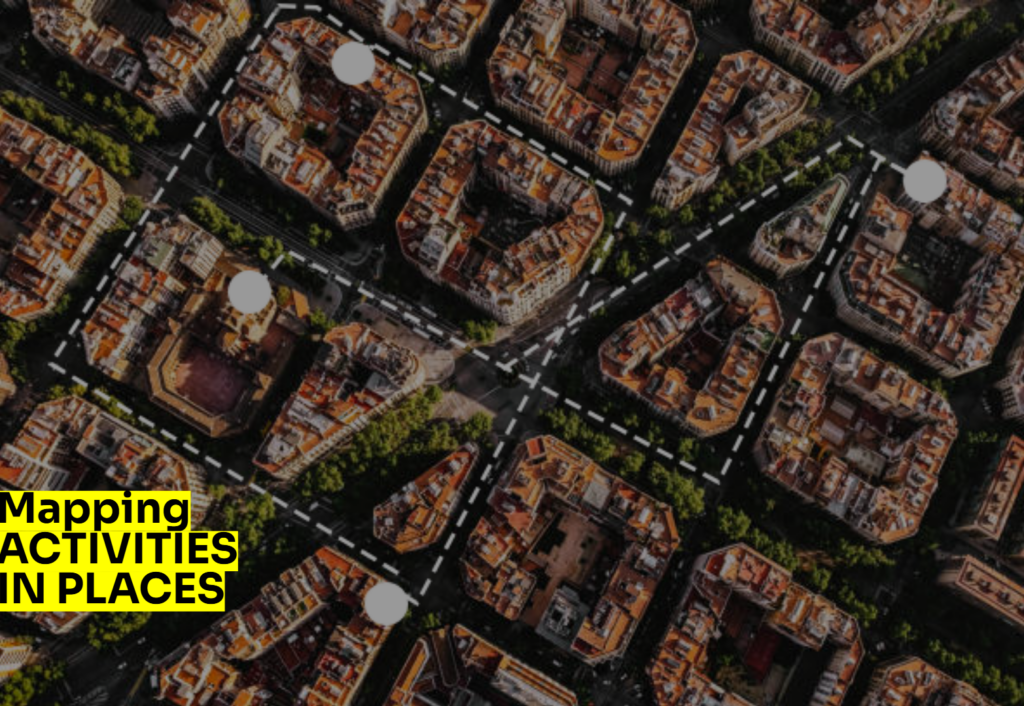
Studying the pattern of stakeholders movement was one the initial and important objective to create this game. So we tried mapping the movement preferences of the users through the pattern they move and machine learn these curves to understand trivial data and analysis of movement.
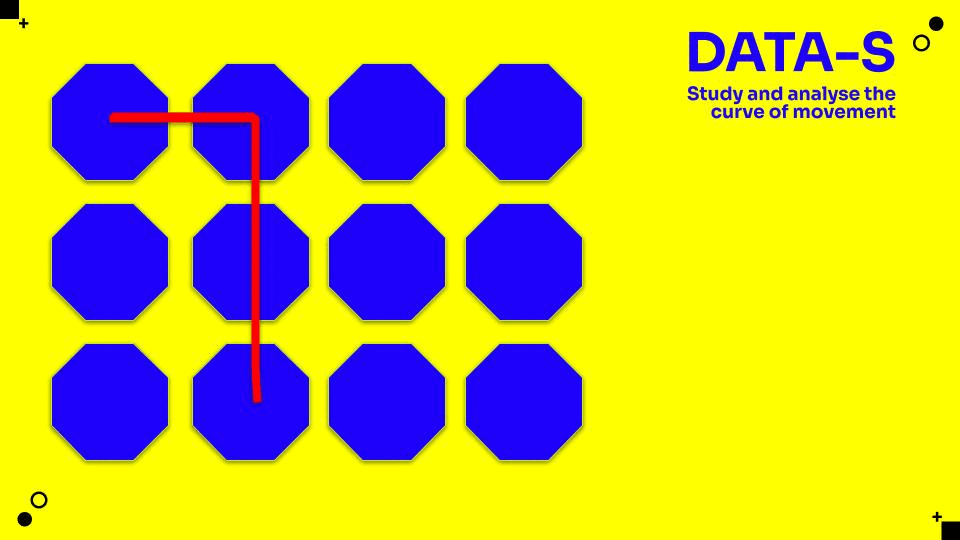
Along the development of the game, we detected that we were falling in a bais of thinking that everyone does their activities in the same places, but we realized that according to your profile (age, profession, etc) you are willing to develop activities in different places. One the most important outputs of Quaker is to gather the data related to where are people developing their activities, being aware that the place is gonna change according to each person, so we overlay this information with the landuses we have in the color dice and map it over Poblenou’s map.

And last but not least, by letting the player to put themselves in the someone else’s shoes. One of our test players stated that Quaker is a representation of the reality in which the one with money can move around, survive and gentrify as they please, while those who have less must be more cautious with their movements because capitalism is not in their favor.
